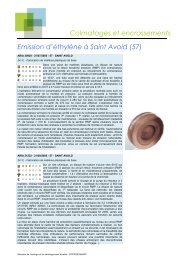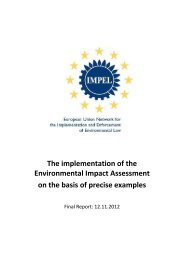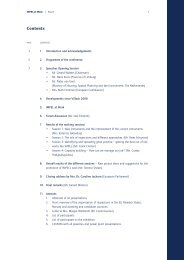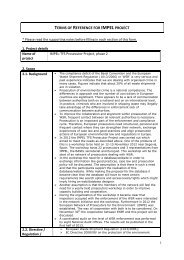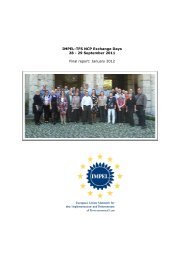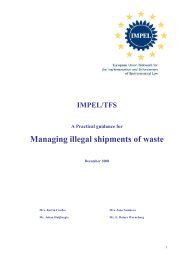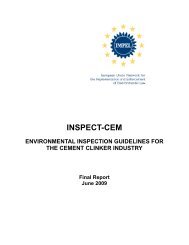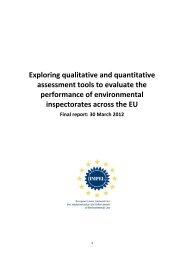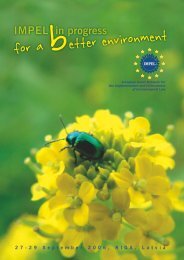2009-09 - IRI Portugal - FINAL REPORT - IMPEL
2009-09 - IRI Portugal - FINAL REPORT - IMPEL
2009-09 - IRI Portugal - FINAL REPORT - IMPEL
You also want an ePaper? Increase the reach of your titles
YUMPU automatically turns print PDFs into web optimized ePapers that Google loves.
Part C – Performing inspection tasks (Environmental Inspection Cycle)<br />
1. Planning of inspections<br />
Objective<br />
To find out the criteria and procedures for planning of inspections and how this is put<br />
into practice.<br />
1a. Describing the context<br />
Overview<br />
Identifying the scope:<br />
The information on tasks, responsibilities, legislation and installations can be found in<br />
part A.<br />
Information gathering:<br />
The following information is gathered:<br />
• Data about installations:<br />
– Emissions (air, water, waste, noise).<br />
– Behaviour (attitude).<br />
– Compliance Record.<br />
– Location.<br />
– Size/Complexity.<br />
– Accidents/Incidents<br />
• Environmental policy of the Ministry<br />
• Permits (information from APA).<br />
• Information regarding complaints<br />
• Data on site visits performed by the Ministry of Economics<br />
• Relevant legislation and regulations that set out the legal obligations in an inspection<br />
are gathered and then disseminated by the Heads of Unit to individual Inspectors.<br />
• Information about companies and installations given by other environmental<br />
authorities including APA, CCDR, ARH and ICNB<br />
• Historical environmental background of the installations based on previous<br />
inspection reports<br />
• Previous monitoring (mainly the monitoring of the emission of the installations, like<br />
wastewater, waste, noise, atmospheric emissions done by the Inspectorate)<br />
• Identifying “critical” installations, through the complaints, accidents, incidents and<br />
occurrence of a large number of non compliances (previous inspection reports)<br />
• Identifying “critical” geographical areas (high industrial concentration, highly<br />
polluted areas)<br />
18



